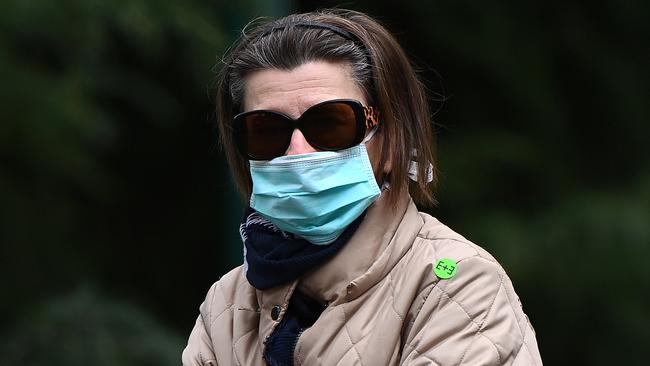Coronavirus: Science backs cover-up decree
Victoria has made face masks compulsory, and chief health officers now concede that wearing one can be an effective measure.

Just a few months ago, the nation’s health chiefs were reassuring Australians there was no need to wear a mask. This week, Victoria made it compulsory, and chief health officers from around the country now concede that wearing a mask can be an effective measure in helping prevent the spread of COVID-19.
So what accounts for the radical change in position?
The answer is that the science around the efficacy of masks in reducing the spread of COVID-19 has grown significantly stronger in recent weeks.
The other issue is availability: early in the pandemic, health chiefs wanted to preserve the supply of PPE for health workers. Now there’s no concern with the supply of masks so everyone is being encouraged to wear one.
So what does the science say about masks and the spread of COVID-19?
A study in The Lancet in late May found strong evidence that wearing a mask was associated with a lower risk of transmission of SARS-CoV-2. The review of 172 observational studies found that virus droplets could travel as far as 8m when exhaled by coughing or sneezing.
The study found masks and respirators reduced the risk of infection by 85 per cent. Medical-grade respirators were the most effective, with a 96 per cent reduced risk of transmission, while other masks such as surgical masks or multi-layered fabric masks reduced the risk of transmission by 77 per cent.
Single-layer masks were the least effective.
The study concluded that “in regions with a high incidence of COVID-19, universal face mask use combined with physical distancing could reduce the rate of infection, even with modestly effective masks”.
If you’re using a fabric mask, the World Health Organisation says that to be the most effective, it should have three layers: a waterproof outer layer, an absorbent inner layer and a blended middle layer.
In making masks mandatory, the Victorian government has said anything is better than nothing, so if people can’t access a medical or triple-layered fabric mask, they can use a scarf or a bandana.
However, one of the authors of the Lancet study, the University of NSW’s Raina MacIntrye, says scarfs or bandannas probably offer “very little” protection from virus spread. This is because they’re made up of only one layer of often flimsy material that fits poorly around the face.
The Lancet study has been backed up by a more recent study in the Journal of the American Medical Association that found “ample evidence” masks reduced the spread of the virus.
Another study published days ago presented a vivid demonstration of how masks reduce the spread of disease. It focused on a Missouri hair salon, where two stylists cut the hair of 139 clients in May before testing positive for COVID-19.
A report by the US Centres for Disease Control said both hairdressers wore double-layer cotton or surgical masks, and nearly all clients wore masks.
After contact tracing and two weeks of follow-up, no COVID-19 symptoms were identified among the 139 clients or their secondary contacts.




To join the conversation, please log in. Don't have an account? Register
Join the conversation, you are commenting as Logout